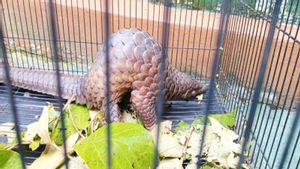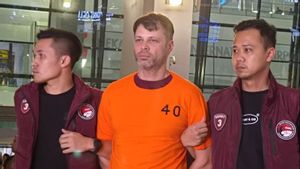JAKARTA - Mumbai is one of the largest cities in India. With the largest population reaching 16.4 million, Mumbai stands as the economic center of India. However, Mumbai's security was disrupted by a series of terror attacks on November 26, 2008.
It all started on November 22 or 23, 2008, when the terrorists sailed across the sea route from Karachi aboard a Pakistani cargo ship. The sea route was chosen to avoid India's security checkpoints at the border or at the airport. The terrorists then hijacked an Indian-flagged fishing boat that was headed by an Indian citizen. The goal is to disguise themselves so that their existence is not suspected by the Indian coast guard.
In the hijacking, the entire crew was killed, except for the captain of the ship who was beheaded recently when the ship was almost reaching its destination. After beheading the captain, the terrorists continue the journey in a small boat. They approached the mainland in the Cuffe Parade area, before finally scattering by taxi to reach their respective destinations in South Mumbai. Since then, the terrorists have divided the group into two to three teams, with each team armed with assault rifles, pistols, hand grenades and about 18 pounds of military grade explosives.
On 26 November 2008, around 21.30 local time, the terrorists spread out and attacked many targets in Mumbai, India. Attacks of automatic weapons and explosives bombarded various corners of the city. Based on the journal The Lessons of Mumbai by Angel Rabasa and Robert D. Blackwill which details the chronology of this raid, more than 150 people died, including 26 foreigners from 15 countries. The terrorists formed four attack teams, one with four men and three with two members each.
The places that became the terrorist attacks in Mumbai were the Taj Mahal Hotel, Trident-Oberoi Hotel, Jewish Chabad House, Chowpatty beach, Gokuladas Tejpan Hospital, Cama and Albless Hospitals, The Municipal Corporation of Greater Mumbai, The State Bank of India, The Metro Cinema, Chatrapati Shivaji Terminus, Leopold Café.
Life-taking groups
Just before the attack began, the terrorists landed in Mumbai. A team of two took a taxi to Chhatrapati Shivaji Terminus (CRT), Mumbai's main train station. The terrorists took out their guns and opened fire on the passengers. The action that was carried out by the two people was crazy. They are able to roam the station and kill indiscriminately for 90 minutes before an armed police unit arrives and forces the terrorists to leave the station.
The attack on the station was aimed at killing Indians. Meanwhile, another attack was carried out to target foreigners. Another group of these terrorists headed to Cama & Albless Hospital, they carried out the shooting. Then they fled again in the police car they had attacked. After carrying out the shooting at Cama & Albless Hospital, they carried out the shooting at the Metro Theater (Metro Cinema Junction) about ten minutes after the shooting they carried out at Cama & Albless Hospital.
Next, the terrorists walked towards the Trident-Oberoi Hotel. Shots were fired along the way. The arrival of the police forced the group to hijack a vehicle again which was finally intercepted. Shootout ensued. One of the terrorists was killed. Others were injured and arrested. These two people are said to be responsible for a third of the deaths in this tragedy.
The second team with two terrorists walked to the Nariman House, a housing complex founded by the Jewish Chabad Lubavich movement (The Jewish Chabad Lubavich movement). They threw grenades at a gas station across the street. They also opened fire on a building before entering the lobby. From inside the building, they took 13 hostages. Five of them were later killed. This team accounted for eight of the total deaths.
The third team with two terrorists moved towards the Trident-Oberoi Hotel. There, they started killing people indiscriminately. The siege lasted approximately 17 hours, before the terrorists were killed. Before dying, the terrorists had killed 30 people. Surprisingly, the suspects did not press charges until they died.
The fourth and largest team moved towards the Taj Mahal Palace Hotel. The terrorists briefly entered the Leopold Café, then opened fire on the visitors with automatic firearms, killing ten. They also made three explosions at the Taj Mahal Hotel. Then they moved to the back door of the Taj Hotel. They walked through the ground floor of the hotel and killed along the road before moving upstairs.
The siege at the Taj Mahal Hotel ended 60 hours later, when Indian commandos managed to kill the last four terrorists. One of the ten suspects who was arrested alive, Muhammad Ajmal Kasab, gave his confession to the Indian government.
Karachi training camp
Before they carried out the attack in Mumbai, they conducted training in four different places in Pakistan, namely Muridke, Mansehra, Muzaffarabad, and in the port area of Pakistan (Karachi). Initially, the number of terrorists taking part in the training was around 500. Then, 32 people were selected, including ten suspects from the Mumbai terror.
The instructors at the training camps are retired Pakistani military soldiers. During the training, terrorists are given content on Indian defense and intelligence and how to evade surveillance by the security forces. On December 9, Indian officials released the aliases of nine gunmen allegedly killed in the Indian military siege of Mumbai, saying all the suspected dead were Pakistani nationals.
One of the ten suspects was arrested named Muhammad Ajmal Kasab. Kasab said he and nine other Pakistanis were trained by the Lashkar-e-Taiba (LeT) terrorist group and a number of men retired from the Pakistani military. The Indian government then stated that the Mumbai attacks were carried out by Laskhar-e-Taiba, and Markaz-ud-Dawa-wal-Irshad or also known as Jamatud Dawa (JuD).
Lashkar-e-Taiba itself is a Pakistani militant group that for more than 2 decades has been waging war against Indian security forces and civilians in the Kashmir region which is contested by India and Pakistan. LeT is known internationally when he was the suspect behind the terrorist attacks that took place in Mumbai on November 26, 2008 for 3 consecutive days.
The name of the organization Lashkar-e-Taiba (LeT) is taken from the translation of Urdu (the language spoken in India, Pakistan and Afghanistan) which means "Army of Medina" (Army of Medina), Medina is the second holiest city for Muslims after the city of Mecca. . Mohammad Ajmal Kasab, a member of the Pakistani militant group, was sentenced to death on November 22, 2012.
The death sentence honors all the innocent victims and policemen who died in the November 2008 Mumbai terrorist attacks. Kasab was buried in the prison compound, where he was hanged.
The English, Chinese, Japanese, Arabic, and French versions are automatically generated by the AI. So there may still be inaccuracies in translating, please always see Indonesian as our main language. (system supported by DigitalSiber.id)









